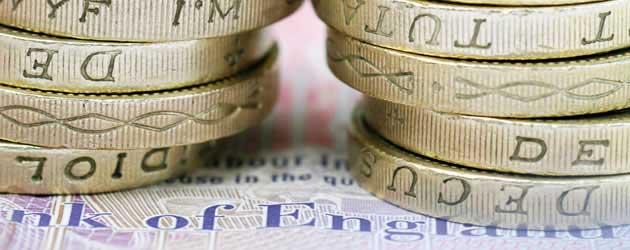
The Pound to US Dollar exchange rate (GBP/USD) hit a 3-week low of 1.5370 on Friday afternoon and is currently trading close to these levels as markets continue to favour the safe haven US Dollar in light of Fed Chairman Ben Bernanke’s recent remarks on monetary policy.
Last week Bernanke announced that the Federal Reserve plans to taper its risk-boosting quantitative easing scheme over the next few months, eventually bringing the electronic printing-presses to a halt by the middle of next year. The US Central Bank currently purchases $85 billion of assets each month in a bid to revive the crisis-hit US economy. The Fed’s expansive QE3 programme has acted as a backstop for markets all around the world, giving them cheap credit and encouraging traders to invest in riskier, but more profitable, assets.
With the fallacy that US stimulus could last forever essentially defenestrated (thrown out of the window) last Wednesday evening, the world’s reserve currency has grown in stature massively.
The safe haven US Dollar has advanced 2.8 cents against the Pound (GBP/USD), 3.0 cents against the Euro (EUR/USD), 3.1 cents against the Canadian Dollar (USD/CAD), 3.2 cents against the Australian Dollar (AUD/USD) and 2.8 cents against the New Zealand Dollar (NZD/USD).
The severe bout of risk aversion that spawned from Bernanke’s highly anticipated policy statement also gave rise to large gains for Sterling against the Antipodean currencies. The Pound to Australian Dollar exchange rate soared to a fresh 2.5-year high of 1.6876, improving by over 4.5 cents towards the end of last week. However, GBP/AUD subsequently gave back around 2.0 cents on Friday as traders looked to lock-in profits following the multi-year high.
Sterling followed a similar pattern against the New Zealand Dollar, striking a 9-month high of 2.0056 on Thursday evening, before consolidating around 1.5 cents lower on Friday due to profit taking stances.
The Fed’s taper trap is likely to dominate markets again this week as the economic calendar is largely devoid of substantial releases. The German Business Climate IFO is expected to hold steady in the region of 105.9; US Durable Goods Orders are predicted to come in around the 3.0% level for the second month in a row; French GDP is forecast to be confirmed at a disappointing -0.4% in the first quarter; UK economic growth is likely to remain sturdy at 0.3%; German CPI inflation is projected to rise two notches to 1.7%; and Canadian GDP is set to have stagnated during April.
With risk appetite unlikely to return this side of July it is entirely possible that we could see Sterling lose more ground to the ‘Greenback’ this week, whilst appreciations for the Pound are certainly conceivably against the commodity currencies – the Canadian Dollar, the Australian Dollar and the New Zealand Dollar – and the Euro.

Comments are closed.